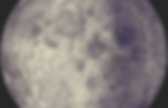

Lunar Calendar. A lunar calendar is a calendar that is based on cycles of the lunar phases. Because there are slightly more than twelve lunations (synodic months) in a solar year, the period of 12 lunar months (354.37 days) is sometimes referred to as a lunar year. A common purely lunar calendar is the Islamic calendar or Hijri Qamari calendar. A feature of the Islamic calendar is that a year is always 12 months, so the months are not linked with the seasons and drift each solar year by 11 to 12 days. It comes back to the position it had in relation to the solar year approximately every 33 Islamic years. It is used mainly for religious purposes, but in Saudi Arabia it is the official calendar. Other lunar calendars often include extra months added occasionally to synchronize it with the solar calendar. The oldest known lunar calendar was found in Scotland; it dates back to around 10000 BP.[1] Lunisolar calendars[edit] All these calendars have a variable number of months in a year.
See also[edit] Lunar Phase. The phase and libration of the Moon for 2013 at hourly intervals, with music, titles and supplemental graphics. Animation of the Moon as it cycles through its phases, as seen from the Northern Hemisphere. The apparent wobbling of the Moon is known as libration. The apparent change in size is due to the eccentricity of the lunar orbit. The principal lunar phases are new moon, first quarter moon, full moon and last quarter moon. These are the instants when, respectively, the Moon's apparent geocentric celestial longitude minus the Sun's apparent geocentric celestial longitude is 0°, 90°, 180° and 270°. Last quarter moon is also known as third quarter moon. Names of lunar phases[edit] Phases of the Moon, as seen looking southward from the Northern Hemisphere. In Western culture, the phases of the Moon have been given the following names, in sequential order: A crescent moon above Earth's horizon is featured in this image photographed by an Expedition 24 crew member.
The Calendar[edit] Moon calendar. <div style="text-align:center; color:red; font-size:large; font-weight:bold;"> Note: you seem to have JavaScript disabled. <br />This page requires it to be enabled for full functionality. </div> The latest release of Java for Windows has tightly restricted which applets are allowed to run in your browser. If you receive security warnings when visiting this page and the calendar does not appear, add the site to the list of permitted pages as follows: Go to Control Panel(classic view) -> Java (32 bit); on the Security tab, click on 'Edit Site List...' The calendar below shows the phase of the moon for each day of the selected month.
Hovering your mouse over any day in the calendar will display a popup showing the moon's distance, phase and other information. Instructions on what the various controls do is found below. Feel free to email me with your thoughts on the program. Instructions Until then: General New - A second full moon which occurs in a single month is called a blue moon. Moon Phases Calendar / Moon Schedule. Moon Phases. Why does the Moon have phases? At the new Moon phase, the Moon is so close to the Sun in the sky that none of the side facing Earth is illuminated (position 1 in illustration).
In other words, the Moon is between Earth and Sun. At first quarter, the half-lit Moon is highest in the sky at sunset, then sets about six hours later (3). At full Moon, the Moon is behind Earth in space with respect to the Sun. As the Sun sets, the Moon rises with the side that faces Earth fully exposed to sunlight (5).The Moon has phases because it orbits Earth, which causes the portion we see illuminated to change.
At the new Moon phase, the Moon is so close to the Sun in the sky that none of the side facing Earth is illuminated (position 1 in illustration). You can create a mockup of the relationship between Sun, Earth, and Moon using a bright lamp, a basketball, and a baseball. When is the Harvest Moon? What is a Blue Moon and when is the next one? On average, there's a Blue Moon about every 33 months.